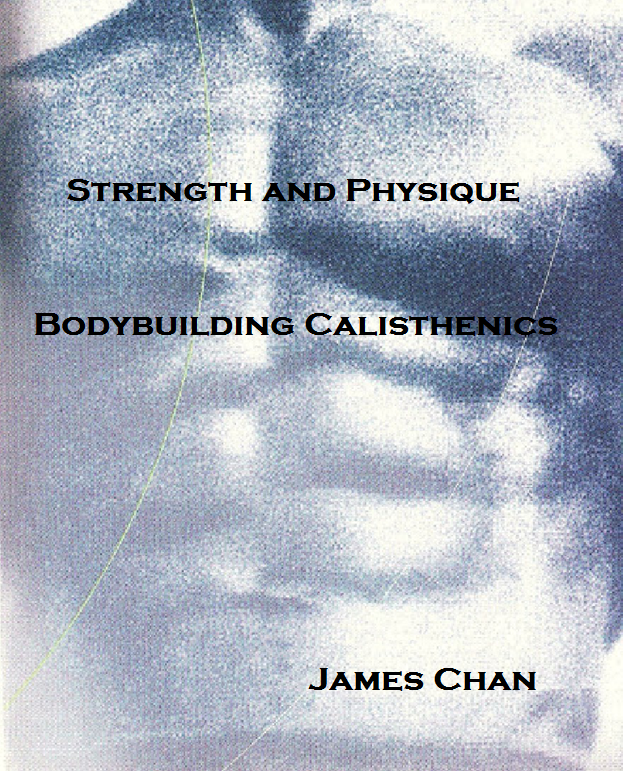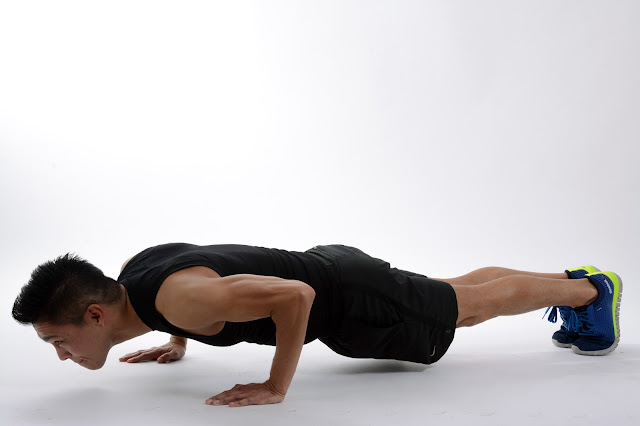8 Simple Exercises to Emulate the Gymnast
In the presence of women, particularly attractive women, men tend to puff themselves up when working out. Men will consciously or subconsciously work out harder when an attractive woman is nearby.
Most women, on the other hand, don't notice men in the gym (unless of course he's very attractive) and they certainly aren't impressed by how much a man lifts. Men notice how much other men lift, but women don't give a rat's ass.
 What women notice is not performance but physique. Men are drawn to the hour glass figure of a woman, whereas women are drawn to a man's shoulder to waist ratio. Wide shoulders accentuated by a trim waist are what women notice and find sexy. So for the most part, women aren't impressed by your physical prowess in the gym.
What women notice is not performance but physique. Men are drawn to the hour glass figure of a woman, whereas women are drawn to a man's shoulder to waist ratio. Wide shoulders accentuated by a trim waist are what women notice and find sexy. So for the most part, women aren't impressed by your physical prowess in the gym.There are exceptions, however. By far the exercise that impresses women the most are pull-ups. Why this is, I can only speculate. In my years of training, I've noticed that no other exercise makes an impact on a woman than the pull-up.
Unlike men who gawk at a women, women do not stare for prolonged periods of time unless they're trying to get your attention. But I have noticed women will stare at the highly chiseled man repping out (not kipping) on the pull-up bar.
Pull-ups are tough to do, and they build the ideal shoulder to waist ratio. Unlike most other exercises, pull-ups are a clear display of functional real world strength. Whether a woman is impressed by pull-up prowess for those reasons, I can't say for sure. But the exercises that turn the heads of women are the bar exercises (pull-ups, dips) and ring exercises, not barbell, dumbbell or machine exercises.
In other words, gymnastic or quasi-gymnastic exercises are sexier. Most people favor the sleek powerful look of a gymnast over the massive lumbering bulk of a bodybuilder. Most men want to look like gymnasts, while women lust after the gymnastic physique. The gymnastics physique symbolizes both sex and strength.

The problem is that most people cannot do any of those gymnastics moves. There is always somebody that will walk into a gym, look at a set of hanging rings and naively think, “I’ll do an iron cross.”
Think you can do some gymnastic moves and look bad ass in the gym? Forget about it! Most people who attempt to do gymnastics get discouraged by the difficulty of the moves. There's a reason why gymnasts start young and train for years. The movements are very humbling and require a high degree of both strength and skill.
Gymnastics training will build an incredibly ripped muscular physique, but it takes years and years of practice. True gymnastics is not just performing static holds like the Iron Cross. It involves smoothly transitioning from hold to hold. For example, a typical series of movements would be to do an V-sit and then transition to a handstand.
Emulating the Gymnast
You may not be able to perform like a gymnast, but you can certainly emulate the gymnast in your workouts to achieve the hard body. To emulate the gymnast, we'll take away the transition movements and focus on the smaller discrete movements or holds.
 The following are the simplest gymnastic exercises that will build a gymnast's physique. These exercises are more accessible to the non-gymnast, since they require more strength as opposed to skill and coordination. Nevertheless, these movements are still difficult and required a lot of practice.
The following are the simplest gymnastic exercises that will build a gymnast's physique. These exercises are more accessible to the non-gymnast, since they require more strength as opposed to skill and coordination. Nevertheless, these movements are still difficult and required a lot of practice.Pull-ups and Dips:
Time and time again I come back to these 2 exercises, and for good reason. People want to emulate the gymnast by doing the muscle-up. But if you can't do the muscle-up, then break it down to its components, the pull-up and the dip. These 2 exercises alone will give you the gymnast's physique, provided that you're doing them on the bars and not on a machine. In Strength and Physique: High Tension Exercises for Muscular Growth I reveal a wide variety of pull-up exercises to give you the ideal shoulder to waist ratio.
L-sit: This is a very simple static hold that will work your abs and triceps.
If you cannot perform the L-sit on the floor with your legs extended, then you can do it on parallel bars with the legs tucked. Hold the position for as long as you can and breathe shallowly.
Front lever/Back lever:
With the front lever, you grab a bar, raise your body until it's in a horizontal position and simply hold it there for as long as you can. The movement is similar to doing a stiff-arm pulldown. The front lever works your lats and abs.
The back lever is when you hang from the bar and hold your body in a horizontal position facing the ground. The back lever also works the core and biceps and helps with shoulder flexibility.
Handstand pushups:
Although the handstand pushup is thought of as a shoulder exercise, it's really more of a triceps exercise. This is because with a handstand pushup, your range of motion is limited to the top half of a press, which stresses the triceps and not the delts. Handstand pushups will certainly strengthen the rotator cuff, but as far as deltoid development, you won't get much from the handstand pushup unless you do deficit handstand pushups.
Most people are not used to the rush of blood to the head while in an inverted position. If you have a difficult time doing handstand pushups for this reason, then just do handstands for time. Overtime you will be accustomed to the handstand position, and the head rush won't even bother you. If anything, you will find handstands rejuvenating.
Ring flyes/ring pushups: Larry Scott helped to introduce this gymnastics exercise to bodybuilders. Stand on a stable platform and grab a pair of gymnastics rings. Put yourself in a push-up position.
Lower yourself to the floor by flaring the arms out to the side with a slight bend at the elbow. When you’ve reached the bottom, reverse direction and squeeze your arms back together as if you’re performing a flye. Maintain total body tension throughout the exercise.
Ring flyes will work your chest, biceps and abs. I usually like to superset ring flyes with ring pushups:
Gymnastics Bridge: The first time I tried to perform a bridge, I felt my hamstrings and back cramp up. But I kept at it and have included it as part of my cool down at the end of my workouts. The bridge not only keeps the spine and back flexible, it strengthens the spine as well.







Comments